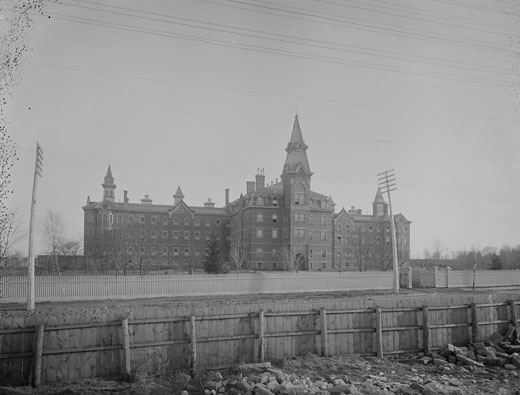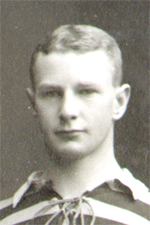|
Henry Goodeve
Henry Hurry Iles Goodeve (1807 – 29 September 1884) was a British physician, surgeon, anatomy lecturer and member of the Bengal Medical Service. He became professor of anatomy and obstetrics at Calcutta Medical College and was later involved in the training of several Indian medical students on his return to the UK. Early life and family Henry Goodeve was born in 1807, in Bury Hall, Alverstoke near Gosport in Hampshire. His father, John Goodeve, was a banker from a Norfolk family, who had married three times. His mother was Elizabeth Hurry.Goodeve, Henry Hurry Iles (1807–1884). Plarr's Lives of the Fellows Online, Royal College of Surgeons. Retrieved 17 May 2018. He married Isabella Barlow. Medical career [...More Info...] [...Related Items...] OR: [Wikipedia] [Google] [Baidu] |
St Bartholomew's Hospital
St Bartholomew's Hospital, commonly known as Barts, is a teaching hospital located in the City of London. It was founded in 1123 and is currently run by Barts Health NHS Trust. History Early history Barts was founded in 1123 by Rahere (died 1144, and entombed in the nearby Priory Church of St Bartholomew the Great), a favourite courtier of King Henry I. The dissolution of the monasteries did not affect the running of Barts as a hospital, but left it in a precarious position by removing its income. It was refounded by King Henry VIII in December 1546, on the signing of an agreement granting the hospital to the Corporation of London.''St Bartholomew's Hospital'' ''Old and New London'': Volume 2 (1878), pp. 359–363. Retrieved 30 January 2009 The hospital became legally styled as the "House of the Poore ... [...More Info...] [...Related Items...] OR: [Wikipedia] [Google] [Baidu] |
James Ranald Martin
Sir James Ranald Martin (12 May 1796 – 27 November 1874) was a British military surgeon in Colonial India who worked in the service of the Honourable East India Company and was instrumental in publicising the effects of deforestation, and finding links between human and environmental health. Early life Born in the Isle of Skye in one of the oldest families living on the island, his father was Rev. Donald Martin and his mother was the daughter of Norman Macdonald and sister of Lieut-Gn. Sir John Macdonald. Martin was educated at St George's and Windmill Street School. He became a C.C.S. in 1811 and entered the Bengal Medical Service on 5 September 1817. He obtained commission of assistant-surgeon through the interest of his uncle, Sir John MacDonald, the Adjutant-General to the Forces. Work He reached India at the port of Calcutta in June 1817 by ship, the ''Lord Hungerford'', and reported for duty with the Bengal service on 2 December 1817. In 1818 he served the British Ar ... [...More Info...] [...Related Items...] OR: [Wikipedia] [Google] [Baidu] |
Industrial Schools
Industrial may refer to: Industry * Industrial archaeology, the study of the history of the industry * Industrial engineering, engineering dealing with the optimization of complex industrial processes or systems * Industrial city, a city dominated by one or more industries * Industrial loan company, a financial institution in the United States that lends money, and may be owned by non-financial institutions * Industrial organization, a field that builds on the theory of the firm by examining the structure and boundaries between firms and markets * Industrial Revolution, the development of industry in the 18th and 19th centuries * Industrial society, a society that has undergone industrialization * Industrial technology, a broad field that includes designing, building, optimizing, managing and operating industrial equipment, and predesignated as acceptable for industrial uses, like factories * Industrial video, a video that targets “industry” as its primary audience * In ... [...More Info...] [...Related Items...] OR: [Wikipedia] [Google] [Baidu] |
Reformatories
A reformatory or reformatory school is a youth detention center or an adult corrections, correctional facility popular during the late 19th and early 20th centuries in Western world, Western countries. In the United Kingdom and United States, they came out of social concerns about cities, poverty, immigration, and gender following Industrialisation, industrialization, as well as from a shift in penology to Prison reform, reforming instead of punishing the criminal. They were traditionally single-sex institutions that relied on education, vocational training, and removal from the city. Although their use declined throughout the 20th century, their impact can be seen in practices like the United States' continued implementation of parole and the indeterminate Sentence (law), sentence. United Kingdom Reformatories and industrial schools Reformatory schools were penal facilities originating in the 19th century that provided for criminal children and were certified by the government st ... [...More Info...] [...Related Items...] OR: [Wikipedia] [Google] [Baidu] |
Lunatic Asylums
The lunatic asylum (or insane asylum) was an early precursor of the modern psychiatric hospital. The fall of the lunatic asylum and its eventual replacement by modern psychiatric hospitals explains the rise of organized, institutional psychiatry. While there were earlier institutions that housed the " insane", the conclusion that institutionalization was the correct solution to treating people considered to be "mad" was part of a social process in the 19th century that began to seek solutions outside of families and local communities. History Medieval era In the Islamic world, the '' Bimaristans'' were described by European travellers, who wrote about their wonder at the care and kindness shown to lunatics. In 872, Ahmad ibn Tulun built a hospital in Cairo that provided care to the insane, which included music therapy. Nonetheless, physical historian Roy Porter cautions against idealising the role of hospitals generally in medieval Islam, stating that "They were a drop in the ... [...More Info...] [...Related Items...] OR: [Wikipedia] [Google] [Baidu] |
Vivian Bartley Green-Armytage
Vivian Bartley Green-Armytage FRCP, FRCS, FRCOG, (14 August 1882 – 11 April 1961) was a British gynaecologist. He was noted for his progressive views, his service to Indian gynaecology and obstetrics, and his distinguished service in the Royal Army Medical Corps during the First World War. Early life Vivian Green-Armytage was born at Clifton Clifton may refer to: People *Clifton (surname) *Clifton (given name) Places Australia * Clifton, Queensland, a town **Shire of Clifton *Clifton, New South Wales, a suburb of Wollongong *Clifton, Western Australia Canada *Clifton, Nova Scotia ..., England, on 14 August 1882 to Alfred Green-Armytage, a solicitor, and Amy Julia (Bartley) Armytage. He was educated at Clifton College and then at the University of Bristol and Bristol Royal Infirmary followed by post-graduate study in Paris. In 1901–1902, he was a member of Clifton Rugby Football Club. Indian Medical Service Green-Armytage was commissioned lieutenant in the Indian ... [...More Info...] [...Related Items...] OR: [Wikipedia] [Google] [Baidu] |
Charles Robert Mortimer Green
Charles Robert Mortimer Green (21 May 186310 April 1950) was a surgeon in the Indian Medical Service. He wrote a book on the ''Management of Children in India'' (1913). References External links Management Of Children In India (1913) 1863 births 1950 deaths English surgeons Indian Medical Service officers British people in colonial India {{England-med-bio-stub ... [...More Info...] [...Related Items...] OR: [Wikipedia] [Google] [Baidu] |
Edward Alfred Birch
Edward Alfred Birch (24 September 184027 November 1912) was an Irish surgeon and member of the Indian Medical Service. Birch was superintendent of the Presidency European General Hospital in Calcutta, and from 1890 to 1892 principal of the Calcutta Medical College. References 1840 births 1912 deaths Irish surgeons Indian Medical Service officers British people in colonial India Place of birth missing {{Ireland-med-bio-stub ... [...More Info...] [...Related Items...] OR: [Wikipedia] [Google] [Baidu] |
Sir Spencer Wells
Sir Thomas Spencer Wells, 1st Baronet (3 February 181831 January 1897) was surgeon to Queen Victoria, a medical professor and president of the Royal College of Surgeons of England. Early life He was born at St Albans, Hertfordshire and received his early education at St Albans School (then located in the Lady Chapel of the Abbey). Career After a short time as a pupil of a surgeon in Barnsley ( Yorkshire), he studied medicine at Leeds, Trinity College Dublin, St Thomas' Hospital (becoming a Member of the Royal College of Surgeons ( MRCS) in 1841 and a Fellow ( FRCS) in 1844), and later in Paris, France. He served as a naval surgeon in Malta, and then established his own ophthalmic surgery practice in London in 1853. In the same year he married Elizabeth Wright. In 1854, and from 1856 to 78, he was surgeon of the Samaritan Free Hospital for Women, London (serving in between as an army surgeon in the Crimean War). He also lectured at the Grosvenor School of Medicin ... [...More Info...] [...Related Items...] OR: [Wikipedia] [Google] [Baidu] |
Crimean War
The Crimean War, , was fought from October 1853 to February 1856 between Russia and an ultimately victorious alliance of the Ottoman Empire, France, the United Kingdom and Piedmont-Sardinia. Geopolitical causes of the war included the decline of the Ottoman Empire, the expansion of the Russian Empire in the preceding Russo-Turkish Wars, and the British and French preference to preserve the Ottoman Empire to maintain the balance of power in the Concert of Europe. The flashpoint was a disagreement over the rights of Christian minorities in Palestine, then part of the Ottoman Empire, with the French promoting the rights of Roman Catholics, and Russia promoting those of the Eastern Orthodox Church. The churches worked out their differences with the Ottomans and came to an agreement, but both the French Emperor Napoleon III and the Russian Tsar Nicholas I refused to back down. Nicholas issued an ultimatum that demanded the Orthodox subjects of the Ottoman Empire be placed ... [...More Info...] [...Related Items...] OR: [Wikipedia] [Google] [Baidu] |
Dwarkanath Tagore
Dwarkanath Tagore ( bn, দ্বারকানাথ ঠাকুর, ''Darokanath Ţhakur''; 1794–1846) was one of the first Indian industrialists to form an enterprise with British partners. He was the son of Ramlochon Tagore, the founder of the Jorasanko branch of the Tagore family. He was also the grandfather of Rabindranath Tagore. Childhood Dwarkanath Tagore was a descendant of Rarhiya Brahmins of the Kushari (Sandilya gotra) division. Their ancestors were called Pirali Brahmin. On 12 December 1807, Ramlochan died leaving all his property to his adopted son Dwarkanath, who was then a minor. This property consisted of zamindari estates governed by the Regulations of Permanent Settlement introduced by Lord Cornwallis in 1792. The Zamindars were the ruling authority of a certain sub-division or region under the British ruling authority in India and had the authority to collect tax or to rule their fellow residents inside the territory on behalf of the British Government. ... [...More Info...] [...Related Items...] OR: [Wikipedia] [Google] [Baidu] |








